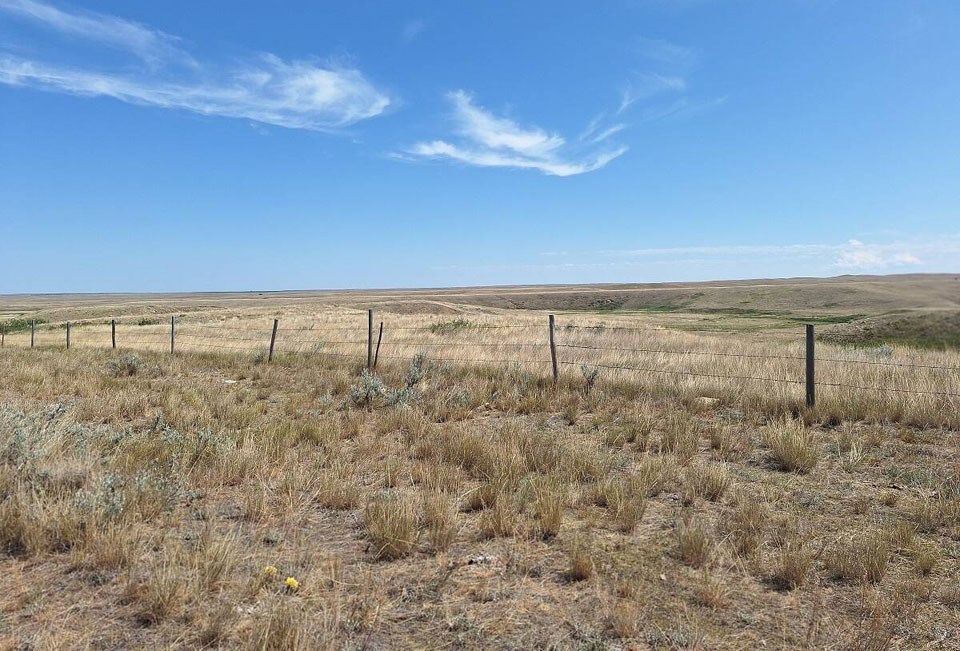ALBERTAFARMER — Although chunks of Alberta got some major rainfall the weekend of June 21-22, the jury’s still out on whether it will make a difference to what has so far been a mediocre year for hay.
According to Environment and Climate Change Canada (ECCC) via CTV News, some regions received more than 100 millimetres of rain that weekend. Much of the rainfall was focused on the foothills south of Calgary as well as many parts of eastern Alberta, said the agency.
Rain in the Peace was spotty, but it wasn’t alone. Grant Lastiwka, a beef producer and forage consultant from the central Alberta town of Innisfail, says patchy rainfall means a grower could have received abundant moisture while their neighbour’s land a few miles away could be dry as a bone.
These regional moisture patterns are “probably more notable” than Lastiwka has ever seen.
”When somebody says “I’ve had four inches this year’ — which we’ve had — you go ahead 10 miles east and they’ve had one inch.”
That said, he called the two-and-seven-tenths inches of rain that fell on his Innisfail farm June 21 a “godsend” with the soil absorbing it almost immediately.
Ed Shaw, chair of the Alberta Forage Industry Network (now ARECA), is optimistic the new precipitation will make a difference.
“It’s going to improve primarily the cereal crops. It may improve the hay crops. It’s definitely an improvement to have some more moisture.”
Hay situation ‘serious’
The outlook is looking bleak for some areas of Alberta even after the weekend rainfall, says Shaw.
“The hay situation is serious,” he says, speaking primarily of regions south of Edmonton.
“I was talking to a farmer yesterday. He farms about 5,500 acres. He’s got about 500 acres less than normal, which is not great, but he wanted to cut it in case of rain, so he might get a good second cut.”
Others he’s spoken to haven’t been even that lucky. He’s seeing — on average — less than a tonne of forages per acre to half a tonne per acre.
“South (of Edmonton) is roughly dry and then there’s areas down in the south from Medicine Hat to Pincher Creek — some areas that have some moisture but the hay is very short this year.
“Even the irrigated people are saying it’s pretty bleak down there.”
Meanwhile, in the Alberta Peace Country, Shaw has heard unofficial reports of “okay” but marginal rainfall.
Alberta’s forage acres got off to a poor start with little soil moisture, little runoff on pastures and empty or semi-filled dugouts, says Lastiwka, calling the situation a “profound problem.”
“This year my neighbour sold a bunch of cows because they don’t have sufficient water. The dugouts didn’t fill. The wells can’t handle it. So the reality is now we’re in a progressive stage of too dry and it’s not the first or second year for the majority of people — it’s a third or fourth.”
Lastiwka has been travelling around the province checking forage conditions in several areas including Athabasca, Duchess and Oyen.
“In general, what we’re seeing are stressed forages that are lacking moisture and hay crops that are heading out with low yield potential.”
He believes Alberta is in a “declining moisture environment” that is making this year’s forage acres even more challenging than usual. ”
If there’s a ray of sunshine on the horizon, it’s the decent state of annual crops, he says.
Forage a ‘mixed bag’ in Saskatchewan
Saskatchewan also received some much-needed rain over the weekend, but so far forage conditions have been a mixed bag. All respondents pointed to previous lack of rainfall as a common denominator, even in the usually moisture-rich Parkland region of the province.
Just ask Duane Thompson, a mixed holistic farmer from that region (specifically Kelliher).
Although rain has been sparse, a hit of fall snow melted into his unfrozen soil, and marginal spring rain has replenished some of Thompson’s soil moisture, giving his hay and forage crops a chance to germinate.
Thompson plants about a section of first-year hay every year for haylage. He doesn’t think his new hay is going to do very well in the short term, but some of his older haylage land is looking good, he says.
Calvin Gavelin, who also describes himself as a holistic mixed farmer, got seven-tenths of an inch of rain over the June 21-22 weekend. However, overall rainfall in the drought-prone Palliser’s Triangle area where he farms remains elusive.
His forage season got off to a bad start due to lack of rain and insufficient subsoil moisture. His perennial forages didn’t even get off the ground. Instead, he may have to lean on his annual forages, which benefited from a surprise shower over the May long weekend.
”It didn’t help the other stuff, because it has all gone dormant. But our annuals are our gold star plan if it works,” he says.
Extra hay cuts hinge on rain in Manitoba
Manitoba, dairy producers are mostly done their first hay cuts while many beef growers are just getting started, said Cindy Jack, livestock and forage extension specialist with Manitoba Agriculture on June 17.
Alfalfa has so far weathered Manitoba’s dry spring better than the grass thanks to its strong root structure, At the time of her comments, most alfalfa had entered early bloom and grasses were starting to head out.
Jack also suggested that overall forage growth was being compromised by older stands and fields that did not receive fertilizer. “(They) generally have lower productivity.”
The prognosis for further hay cuts will be weather-dependent, she added.
“Without significant rainfall soon, regrowth will be limited due to moisture stress, reducing the likelihood of subsequent cuts.”
Southeastern Manitoba dairy farmer Stefan Signer echoes Jack’s concerns.
“At this point, we are really hoping and needing some rain so that the fields can recover for maybe a second and maybe a third cut,” the Kleefeld-area farmer said.
About the author
Related Coverage
Agriculture students learn farm machinery operation risk-free with tech
Tara Sawyer, former Alberta Grains chair, wins provincial byelection
Alberta irrigators continue efforts to keep out zebra mussels
Alberta irrigation farmers strive for efficiencies to battle through droughts




